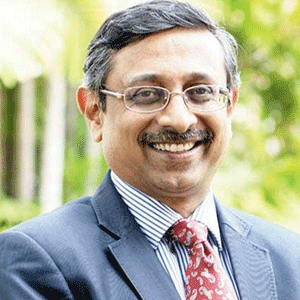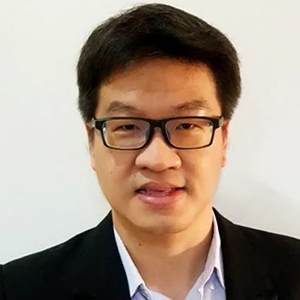THANK YOU FOR SUBSCRIBING

Evangeline Chua, Chief People Officer, GovTech
Digital is pervasive in this Internet age, and organizations have been kept busy integrating digital and social media data, content and metrics across different platforms. And the good news is, more disruption is on the way. According to a Moneytree analysis, $58.6 billion was pumped into funding supporting 4,520 start-ups in 2016. At least one of these start-ups will one day disrupt the organization and its industry— it almost doesn’t matter which industry. And it almost certainly might be yours. Digitalization has become an essential utility and it is imperative for the CHRO to understand the impact of digital transformation on the organization’s business. Take a look at the hot tech trends today: Cloud, API Gateway, Blockchain, together with the Internet of Things (IoT), Artificial Intelligence (AI), and Big Data. How does this translate into a vision for a CHRO— and the workforce?
Age of Automation
Previously, people were the only asset for an organization. However, since the era of industrialisation, there has been an increasing dependency on technology and automation to propel businesses. Technology is very much a double-edged sword: Yes, it poses a threat to employment and yet, it has created a different economy requiring new capabilities. Just look at Amazon Web Services, which eliminated in-house data centres and infrastructure jobs, while concurrently creating employment through cloud applications. Thus, HR plays a proactive role in following the market trends and technological disruption, and ensures that the workforce remains relevant and renewed with a fresh mind-set. Therefore, the CHRO must be hyper-aware and adapt the organization’s people strategy and ensure that the deployment meets the demands of the digital transformation in order to protect its workforce from becoming obsolete.
The CHRO Strategy
A workforce strategy must take into consideration the potential of tapping into the labour market. For starters, it has to determine the right composition of a permanent workforce and resource augmentation for tech talent—either through buying, or borrowing of new skills. By doing so, it enables an organization to achieve the optimal mix of skills sets and talent. In addition, organizations must adapt their learning and development strategy and framework to expand the training capabilities required to develop the competencies necessary to meet current and near future demands.
Chro Must Be Hyper-Aware And Adapt The Organization’s People Strategy And Ensure That The Deployment Meets The Demands Of The Digital Transformation In Order To Protect Its Workforce From Becoming Obsolete
Creative Co-creation
Take the creation of sandboxes for example, where experimentation takes place and the use of various platforms allows employees to contribute to projects they are passionate about. One popular example is Google’s famous ‘20 percent Time’ policy. This enables cold sourcing, where the best tech talent come together to collaborate and improvise. And co-creation need not be locked up internally — there is a big playpen for collaboration from within and externally. Ideally, silos should be banished forever. Companies should therefore create platforms for the workforce to be connected to these ecosystems in order to evolve, innovate and create. And the CHRO should jump in to lead these efforts.
Here’s one real-world example
With the rapid advancement of technology, it is important for the public sector — using the example of the Government Technology Agency of Singapore (GovTech) not to lose sight of, and keep abreast of the changes. GovTech launched ‘The Smart Nation Fellowship Programme’ in March 2016, and has appointed a select group of top data scientists, technologists and engineers from academia and industry in Singapore and overseas to join the Singapore Government — for short stints of three to six months. The Fellowship Programme is an ongoing initiative, and is one example of creative co-creation from a public sector perspective.
Digital HR
Another major trend on the CHRO ‘to-do’ list is ‘Digital HR’. According to Deloitte’s 2016 Global Human Capital Trends report, HR leaders believe that Digital HR is an important priority. It should be no surprise that leveraging technologies is one of the main highlights in global HR trends. In a nutshell, competitive pressure is pushing companies to outperform each other — by creating a superior employee experience and sense of engagement, through digitalisation and social media. With the younger millennial generation, speed and accessibility are to be expected, and not simply a wishlist — from the moment they apply for a job, and throughout their employment in the organization. Therefore, HR is expected to leverage on social media platforms and mobile technology to provide a seamless and responsive candidate and employee experience. There is also a big shift from the traditional retrospective HR focus on reporting lagging indicators, to utilising predictive analytics and understanding algorithms to sharpen decision management.
Another trend that might surprise old school HR practitioners: Chatbots are becoming popular as a communications tool, for offering a distinct voice to a specific audience (like jobseekers), and also the novelty value of conversation.
There is a common saying, if everyone claims they are thinking out of the box, the box needs to be reimagined. And disruptive technologies are constantly helping us to reimagine the box. Fundamentally, if CHROs do not have the foresight to transform themselves to understand and leverage on digitalisation and technological advances, they will risk becoming obsolete in the Digital Age. The only way to survive is to thrive as a Digital CHRO.
The Government Technology Agency of Singapore (GovTech) is tasked with harnessing info-communications technology and related engineering for public sector transformation.
Weekly Brief
I agree We use cookies on this website to enhance your user experience. By clicking any link on this page you are giving your consent for us to set cookies. More info
Read Also














